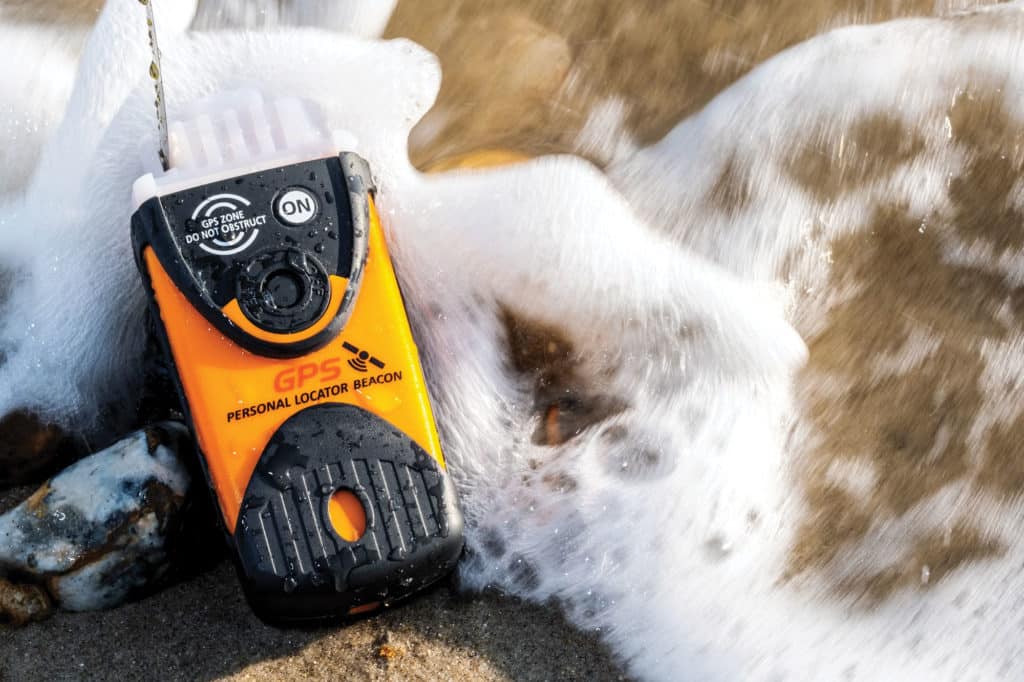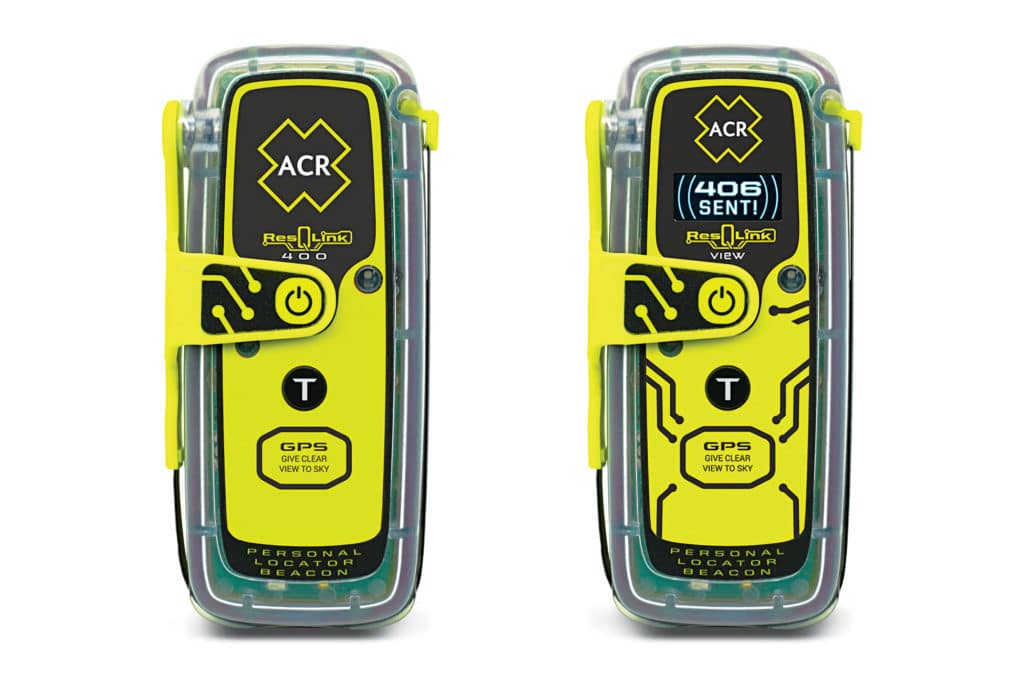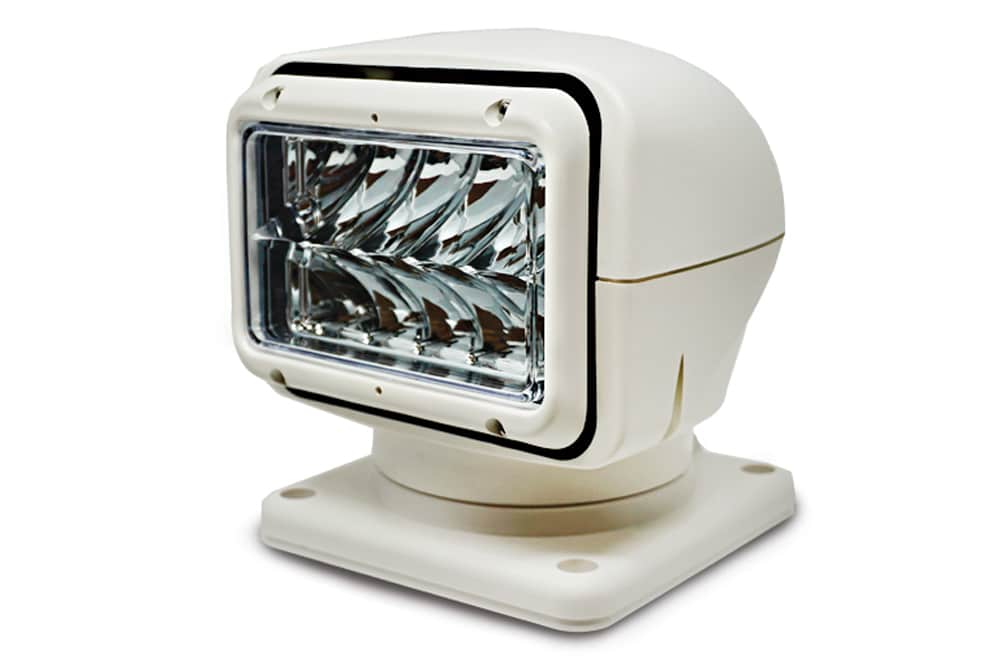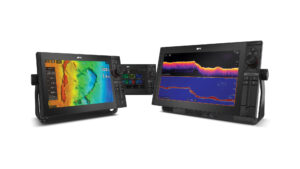
Just as nature abhors a vacuum, mankind abhors informational silence. Take the tragic story of four mariners who were stranded, years ago, in a life raft off the Scottish coast. The quartet activated their 406 MHz emergency beacon, which notified the International COSPAS-SARSAT Programme via satellite communications—but paranoia struck. The group questioned whether their signals had been received at all.
Three of the four ultimately swam for shore; only the mariner who trusted the technology survived.
While properly registered EPIRBs are the most important piece of electronic safety equipment available to mariners, advances in personal locator beacons and other individually carried man-overboard equipment add an extra layer of safety.
Satellites have been relaying 406 MHz signals from EPIRBs and PLBs for decades. In recent years, some manufacturers began adding multichannel global navigation satellite system receivers that allow the beacons to bundle their location information with their 406 MHz signals.
Better still, as part of the Meosar project, a new constellation of medium-Earth-orbiting, search-and-rescue satellites and ground antennas recently came online, offering faster service. The arrival of this MEO constellation has facilitated EPIRBs and PLBs that are compatible with multiple sources of GNSS, including the European Union’s Galileo global-positioning network. This compatibility delivers significantly faster, more-precise signal reception and tracking (read: smaller haystacks) to GNSS-compatible EPIRBs and PLBs.

Also, starting in late 2020, a new generation of PLBs (and EPIRBs) is expected to be available, allowing COSPAS-SARSAT to send a return link service confirmation to the beacon.
“Imagine floating in the ocean—your boat 200 feet below the water’s surface—wearing a life jacket, trying to stay warm, and mentally fighting the demons in your head,” says Mikele D’Arcangelo, ACR Electronics’ vice president of global marketing and product development. “[Return link service is] really valuable peace of mind for the survivor.”
Sean McCrystal, senior maritime marketing manager at Orolia Maritime—the manufacturer of McMurdo, Kannad and Netwave brands—agrees: “Research has shown that by simply letting a person know that professional rescuers are aware of their situation and location, those in a life-and-death situation are less likely to make life-endangering decisions.”
While older-generation PLBs aren’t Galileo- or RLS-compatible, D’Arcangelo says, they will continue work once the next-generation PLBs go live. “The design specifications and certifications are still the same, the satellites still work exactly the same; it’s just the newer, RLS-compatible beacons [that] will give you [RLS] confirmation,” he says.
One inherent drawback to PLBs is that their 406 MHz signals go to satellites, not to local traffic. Automatic Identification System MOB beacons with GPS receivers were created to fill this informational vacuum. Once activated, AIS MOBs transmit “MOB active” alerts to nearby Class A and Class B AIS users over VHF radio frequencies. These alerts include the AIS MOB’s GPS coordinates, and the alerts transmit once per minute for (typically) 24-plus hours.
Once an AIS MOB’s signal is received by an AIS-equipped vessel, the latter’s AIS screen or multifunction display depicts an active AIS icon (sometimes a red circle with a cross) and the AIS MOB’s location information.
Some yacht-installed AIS equipment can trigger auditory and visual alarms when an AIS MOB signal is received, which is critical if the MOB’s own crew is belowdecks, asleep or otherwise unaware. Likewise, ACR’s AIS engine kill switch and alarm offers an additional layer of security.
“We’ve modified our previous AIS alarm to incorporate the ability to kill the boat’s engine should one of the programmed AIS MOBs be activated,” D’Arcangelo explains.

While PLBs and AIS MOBs can collectively work to notify rescuing authorities (PLBs) and local traffic (AIS MOBs), as of this writing, attaining this dual-audience capability requires two discrete devices.
“I believe the combined PLB with AIS is closer than ever,” McCrystal says, adding that “the issue remains legality and approvals rather than engineering know-how.”
Bluetooth-enabled rescue devices represent an interesting and recent innovation in electronic MOB equipment. These devices—including ACR’s OLAS trackers and Weems and Plath’s CrewWatcher—work by establishing a radio-frequency link with a paired smart device that’s running a dedicated app. Should the Bluetooth device skip its geofence, the link breaks and the app immediately marks the device’s location. System depending, the app can also trigger other external alarms, and ACR’s OLAS app provides an emergency script that users can read into their VHF radio.
Critically, Bluetooth MOB devices don’t provide real-time homing back to the MOB but instead direct the crew back to the device’s location at the time of the incident.
While an all-in-one beacon delivering 406 MHz and AIS MOB protections is still the stuff of unicorns, mariners are already pairing PLBs with Bluetooth MOB devices. “We have created a new safety kit that includes our ResQLink PLBs with OLAS tag as a new way for mariners to have the benefit of a 406 MHz beacon, [while] also having the MOB functionality to alert [their] own vessel,” D’Arcangelo says.
Additionally, ACR’s OLAS Core and OLAS Guardian are USB-powered portable base stations that can track every paired OLAS tag, sans a phone (read: a potential weak link), with the Guardian serving double-watch duty as an engine-kill system. Finally, ACR’s OLAS Extender delivers signal-repeater capabilities and can monitor up to 15 OLAS tags.
While today’s market abounds with electronic safety equipment, all vessels should carry a properly registered, RLS-enabled EPIRB. Moreover, until a unicorn emerges, prudent mariners should carry a PLB and either an AIS MOB or a Bluetooth MOB device. The frugal are politely reminded that parachutes are also optional if one only plans on skydiving once.









